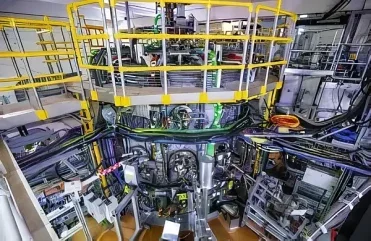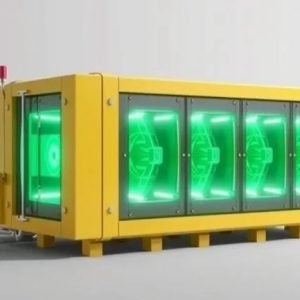
The UK Atomic Energy Authority (UKAEA) says an international team is spearheading a series of ambitious experiments using the UK’s compact tokamak, Mega Amp Spherical Tokamak (MAST) Upgrade, at its Culham Campus near Oxford.
For the next 100 days, the UK’s national fusion energy laboratory will work with more than 100 scientists from 37 institutions worldwide on MAST Upgrade’s fourth round of experiments.
MAST Upgrade is a compact fusion machine designed in the shape of a cored apple, in contrast to other ring-shaped tokamaks. It tests plasma science theories using deuterium fuel – an isotope of hydrogen – using real-world experiments.
This fourth scientific campaign and will focus on:
- Maximising the core plasma pressure to determine effects on the plasma’s properties.
- Understanding the methods to control the plasma’s exhaust.
The scientists aim to conduct over 50 experiments, the largest number ever run by MAST Upgrade in an experimental campaign, to generate up to 1,600 plasma pulses. A “pulse” refers to the duration a plasma is confined within a fusion energy machine’s inner vessel.
MAST Upgrade has played a key role in providing the foundation for the design of the UK’s prototype fusion energy power plant, Spherical Tokamak for Energy Production (STEP), which will be sited at West Burton in Nottinghamshire.
The latest experiments will see MAST Upgrade operate at higher temperatures (35 million degrees Celsius from 15 million degrees Celsius), creating conditions closer to those expected in future machines, such as STEP.
James Harrison, MAST Upgrade Science Leader at UKAEA, said: “A diverse team of researchers from across the world will be contributing to this effort. This will be the most exciting scientific campaign MAST Upgrade has undertaken to date, with a clear focus on understanding how to confine and stabilise high-performance fusion plasmas while ensuring effective power exhaust.”
MAST Upgrade is recognised by the fusion industry for addressing plasma exhaust, the intense heat that escapes from the plasma, which is one of fusion’s major challenges.
Dr Fulvio Militello, Director of Plasma Science and Fusion Operations, added: “Previous results have demonstrated the effectiveness of MAST Upgrade’s innovative Super-X divertor, showing a 10-fold reduction exhaust temperature without impacting the hot core plasma. This campaign aims to build on these impressive results and will explore whether more compact and cost-effective divertors can achieve similar reductions in exhaust temperature.”
MAST Upgrade received significant enhancements to its operating system earlier this year, including the addition of a cryoplant – a facility that produces and distributes the cooling power required for the magnets, thermal shields, and cryopumps to reduce the pressure inside the machine’s inner vessel, and raise the plasma’s temperature. The £5m ($6.5m) enhancements were funded by UKAEA and the Engineering & Physical Sciences Research Council.
“By utilising our world-leading facilities and expertise at UKAEA, we aim to lead the charge in fusion research. MAST Upgrade’s fourth round of experiments will accelerate our scientific progress by deepening the understanding and optimisation of future tokamak designs and fusion powerplants, bringing us one step further to commercial fusion energy,” Dr Militello said.






